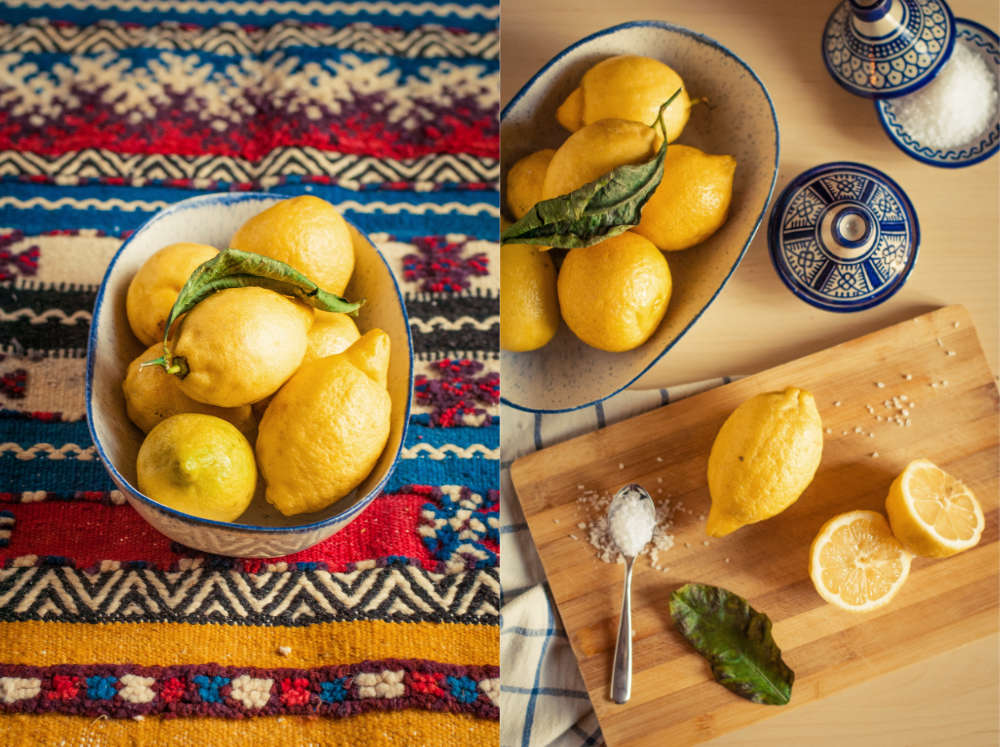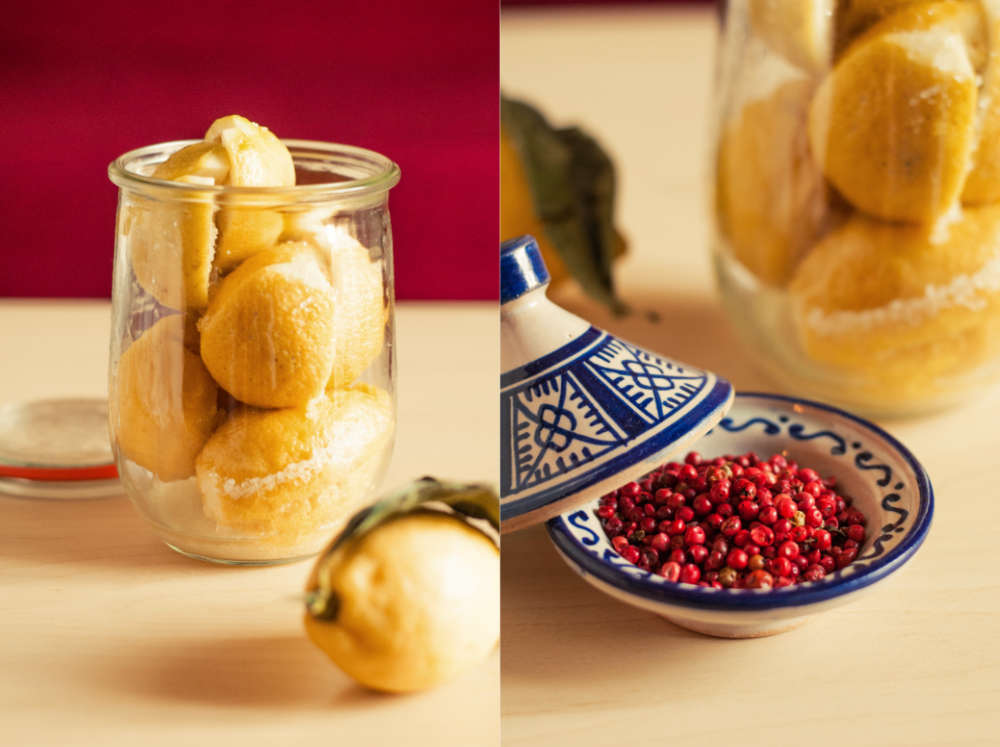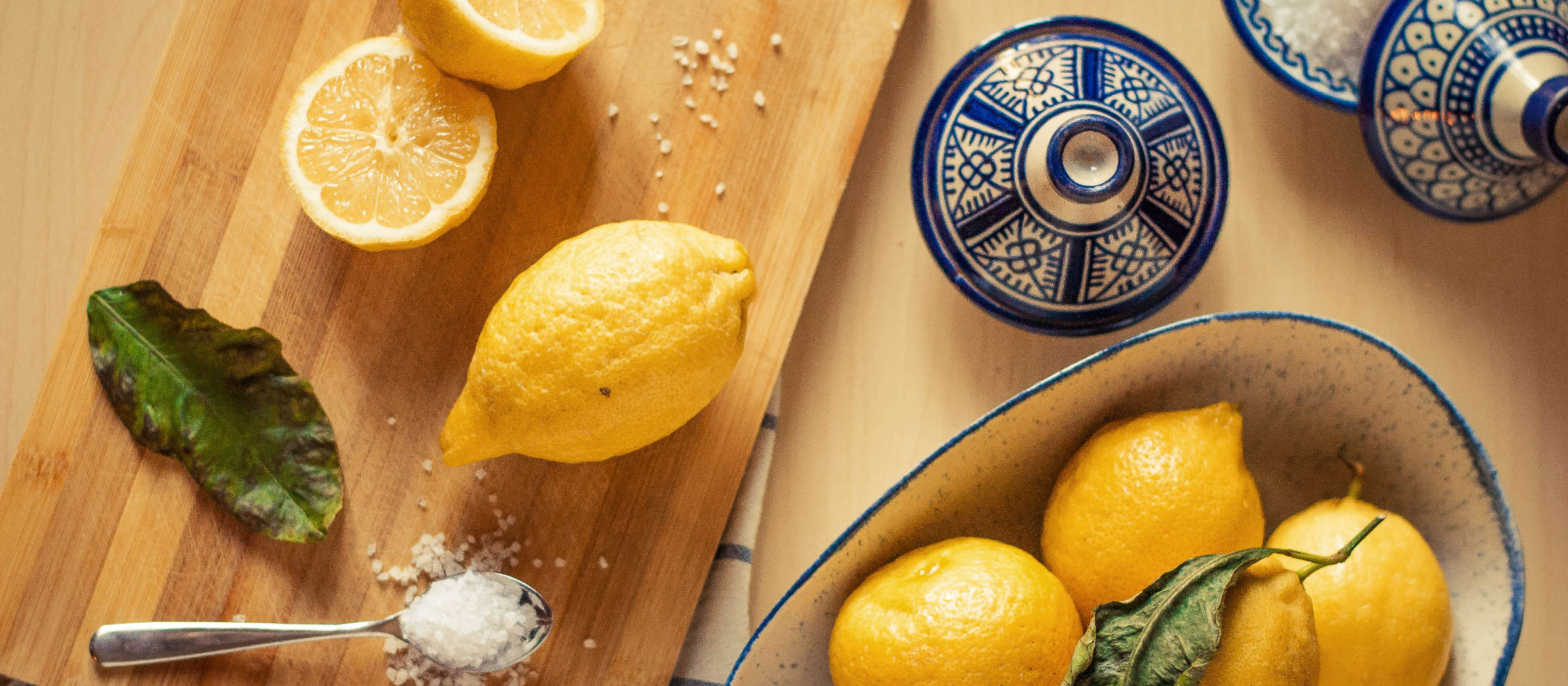In Morocco, alongside endless types of olives, you’ll find preserved lemons for sale – by the piece – in every food market.
I first discovered preserved lemons as one of the main ingredients of the classic chicken tajine. The deep, zesty, salty punch that it gave to the chicken got me a little bit obsessed, and of course, I had to make a jar for my pantry as soon as I returned home.
A. D. V. E. R. T. I. S. I. N. G.

Incredibly easy to make yourself, the 3-4 weeks it takes for the salt to work its magic are absolutely worth the wait. I’m not even kidding when I say I tried preserved lemons with almost anything: pasta and all sorts of grains, sandwiches, salads, grilled vegetables, gazpacho, legumes, poultry and white fish, and even cheese! I’m pretty sure, sooner or later, I’ll find a way to use it in a dessert of some sort.

Ingredients
- Unwaxed, organic lemons
- Coarse, unrefined sea salt
- Extra lemon juice
- Tight sealing, sterilised glass container
- Pink peppercorns (optional)
- Bay leaves (optional)

Procedure
- Wash, brush and dry the lemons to take off all traces of dirt.
- In the meantime, sterilize the glass container by filling it with boiling water, and letting it sit for a couple of minutes. Pour the water out and leave to air-dry.
- Trim the top and bottom of each lemon, about 0,5cm. Cut them lengthwise into quarters, through the skin, until about 2cm from the bottom. Pour a tablespoon of salt into each lemon, a couple at the bottom of the preserving jar, then fit them tightly into the container. Just when you think you can’t fit anymore, press them down a bit harder and add one more lemon! Seal the jar and leave it for about a week.
- After the first week, remove the lid and push the lemons down to squeeze as much juice out as you can. At this point, you can add the peppercorns and bay leaves (or rosemary and chile, as suggested by Ottolenghi), and as much lemon juice as you need to cover the lemons. Seal the jar and leave in a cool place for at least 3 more weeks.
Notes:
- Some suggest to put the jar in the fridge, but a cool and dark place will do. I keep mine on top of the refrigerator since I go through the whole jar quite quickly! You can forget about them for months, but I guarantee you won’t. J
- The peel is the most aromatic part of the lemon, but you can use the pulp too. I personally don’t rinse it before use
- Follow me on an imaginary travel to Morocco here!
Photos ©Luna Ferrari
About the author
Luna Ferrari
1/2 Italian 1/2 Filipino, she is a true stimulation junkie. Published food-teller and photographer, passionate traveller, home cook, and cheese taster. In 2013, she earned a Masters degree in Food Culture & Communications at The University of Gastronomic Sciences, and now follows Food Events & Education for Eataly’s international locations. She loves sharing food & travel tips.





